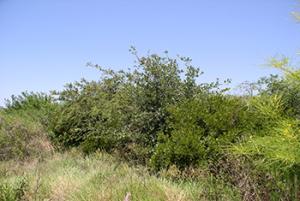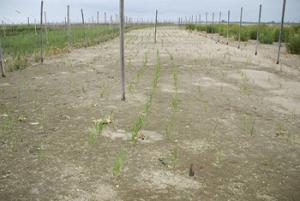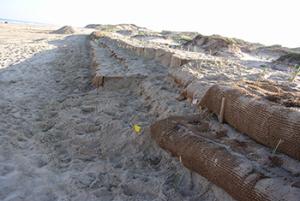Plant Materials Center Resources for Coastal Restoration Efforts
Plant Materials Centers collaborate with many agencies and organizations to improve the health of coastal ecosystems throughout the East and Gulf Coasts.
The third week in September is designated National Estuaries Week by Restore Americas Estuaries to highlight the importance of estuaries and coastal areas to wildlife, water quality and storm protection. Coastal erosion and wetland deterioration are serious and widespread problems affecting much of the East and Gulf Coast regions of the United States. Multiple USDA NRCS Plant Materials Centers (PMCs) are contributing to the health of coastal ecosystems by selecting resilient plant materials and developing technologies to improve plant species diversity, shoreline erosion control, and estuary and dune restoration.

For example, the Golden Meadow PMC in Louisiana has partnered with local, state and federal agencies to address the lack of critically needed vegetation on ridges in low-lying marshes of the Gulf Coast. Marsh ridges reduce storm surges and are critically important habitats for migratory birds. Native woody plant species such as live oak, mulberry, sugarberry, yaupon holly and persimmon are in evaluation due to their ability to persist in varying salinities and inconsistent soil conditions as well as being pollinator friendly. The Port Fourchon Maritime Forest Ridge project in Fourchon, Louisiana has proven capable of supporting woody plants on coastal man-made ridges.

The Cape May PMC in New Jersey has cooperated with the National Park Service, Army Corps of Engineers and the BLM Seeds of Success Program to refine seed collection, cleaning procedures and establishment techniques for many coastal plants. A direct seeding technique developed by the PMC was used for a Marsh Islands Restoration project in Jamaica Bay, New York, the USFWS-Prime Hook National Wildlife Refuge in Delaware and for restoration after Superstorm Sandy. Cape May has also developed technology to diversify plant species composition on sand dunes.

The Kika de la Garza PMC in Texas has evaluated various soil bioengineering techniques for shoreline and dune stabilization using improved plants and natural erosion control fabrics.
When natural disasters occur, PMCs respond with technical assistance to NRCS staff and other cooperating agencies. PMCs also coordinate closely with the nursery and seed industry to assist with supplying needed plant materials to increase the future availability of selected plants for restoration projects. Additional technical publications and information on plant species and PMC conservation plants recommended for coastal restoration can be found on the National Plant Materials Coastal & Shoreline webpage.

